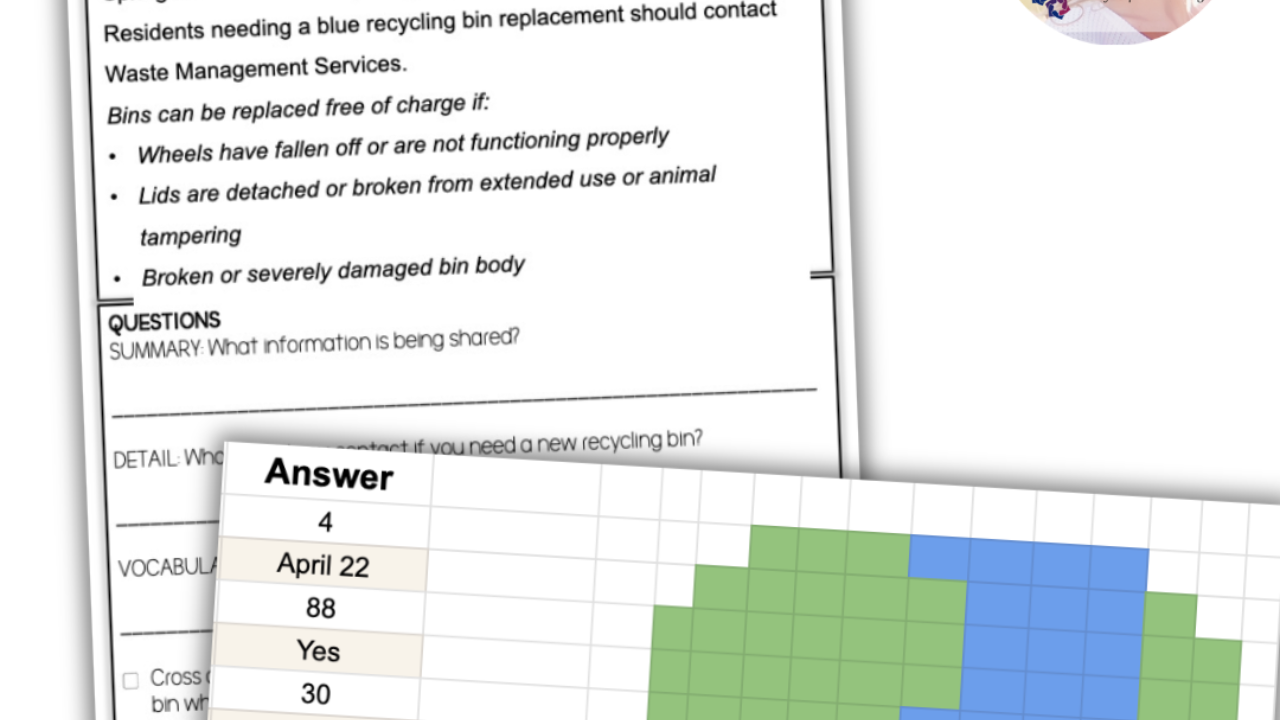How to Teach Cost Comparison Shopping
Jan 30, 2021
Our next topic in the Consumer Math Blog Series is about how to teach Cost Comparison Shopping. Read more about why and how you can teach Cost Comparison using my Cost Comparison Lesson Unit (click here to get your copy).
A family member tells your student to run in and get a gallon of milk and a loaf of bread and hands them $7.00. If your student grabs the organic loaf of bread and glass bottle milk then $7 will no where near cover the cost of the purchase. Learning to stop, look at the prices AND products, and make an educated decision is worth its weight in gold.
Cost Comparison Lesson Unit
Key-Must-Teach Concepts
Compare similar products. You can’t compare dish soap and hand soap or shredded cheddar cheese and slices of pepper jack, they aren’t the same. Yes, they are both soap and cheese products, but they serve different purposes and that is a big deal.
Best value is key. In some cases this means the lowest cost (which is also a skill to focus on) and other times it means the best quality product. Being able to see the difference between those two key indicators (cost and quality) will put your student’s cost comparison skills into overdrive!
Lesson Objective
Compare the cost of two items and determine the product that is the best
value.
Lesson Unit Break Down
Day 1- As I mention below (Reading Passage Option), allow the reading passage to serve as ‘homework’ to introduce the topic. Once Day 1 starts, delve into the visual flow chart, offer the brain teaser, and then read the passage aloud as a class. Your students should be more familiar with the topic from their homework, but revisiting it will help strengthen that layer of understanding. Round out the day with a T/F question and writing prompt.
Day 2- Get to the nitty gritty of cost comparison with the Notes and Parts worksheet. As you likely know, the Notes is the general overview of the concept and the Parts worksheet starts to peel back the detailed layers of the concept and makes the connection between the concepts and vocabulary with an example.
Day 3- There are two parts to the guided practice. First, students will use the internet to find a product they want to buy and the cost of that product at two different sites. The second activity takes them through good old paper sale ads, finding similar items and comparing costs. You can ask staff to bring in the paper sale ads or you can now print them from store websites (so handy!). You can also request them from the library, as they may have tons for you to take!)
Day 4- The independent practice will mirror the guided practice. The activity has students identify an item they want to purchase, peruse sites to find similar items, and then record the best value. Again, students will need access to the internet.
Day 5-The last day engages students in a review (see Task Card Idea below), an assessment, and functional math review. Then, put the cherry on top of the lesson with a fun and low-stress word search!
Cost Comparison Lesson Unit
Reading Passage Option (pictured below, right)
You’ll want this concept to marinate with your students before you tackle it in the classroom. So, if possible, assign the reading passage as homework the class period before you intend to read it in class. As the saying goes, twice is nice and reading the passage twice only helps the students’ brains to pick up more and more details.
Listen and Learn
A Listen & Learn is a short, 5 sentence PowerPoint/Google presentation that introduces the topic using visuals and audio. Ideal for non-readers! Read about what they are and how they might be right for your classroom here.
Task Card Idea
Put all the cards into a big manilla folder and give each student a paper to record their answers. Each student picks one card out and answers it, then let the cards snake through the class. Some rows will pass their cards back, some will pass it forward, but everyone should get to see and answer every card, just not in numerical order. This will keep the students on their toes as they pass cards and have to reference the number and then answer it before you cue them to Pass It! Between 30 seconds and 1 minute is a good amount of time to read and answer each question.
Cost Comparison Lesson Unit
Further Practice Idea
Get to that local grocery store! Set up your students in pairs, make sure each pair has a camera (a phone camera is perfect) and an item to research (like cups of applesauce or frozen personal pizza or gallon of 2% milk). Then, send them to the grocery store, have them take a picture of the aisle (so you can see all the options), and identify the item that is the best value. Have the partners explain if the best value means lowest price or best value means best quality.
Ultimate Goal of the Lesson Unit
Look twice, pay once. I know that saying originated with measuring and cutting wood, but it is just so applicable here. Take an extra few seconds to look around and save yourself a few pennies here and there. Those saved pennies quickly become dollars and tens of dollars (and more) and will be worth every extra look at both prices and quality.
Cost Comparison Lesson Unit
May I Also Suggest Teaching
You may learn a new idea to two from these Consumer Math Blog Posts:
















